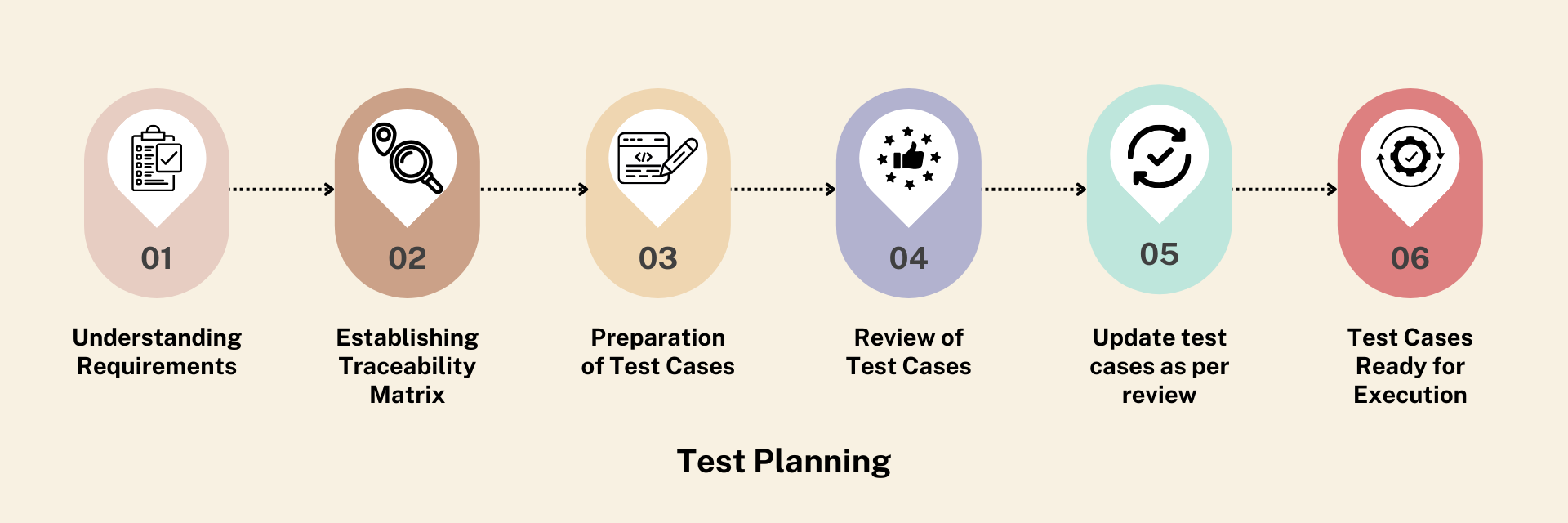CASE STUDY
Value of API Testing for End-to-End Integration Success
Introduction
Hoonartek was approached by one of India’s leading Non-Banking Financial Companies (NBFCs). This NBFC is empowering the housing finance ecosystem by enabling lenders to enhance their credit offerings. The NBFC client engaged Hoonartek to conduct user acceptance testing for the PAS (LOS) integration to Power Curve Strategy Management (PCSM) in accordance with the Low-Level Design and Data Layout Specification documents provided by the client.
The purpose of this case study is to ensure the quality of the developed solution in PCSM. The testing of the solution on different platforms and ensuring the quality of integration are of utmost importance.
The Business Challenge
One of the largest NBFCs, a client of Hoonartek, has several different lenders who collaborate to create a housing finance ecosystem with credit offerings. The client team engaged Hoonartek (HTK) to conduct user acceptance testing (UAT) for the PAS integration to PCSM. To address issues that were not traced during the actual development phase, we ensured that the developed solution was thoroughly tested through API testing. This allowed us to identify potential defects using either functional testing (using tools like Postman or SoapUI) or end-to-end (UAT) testing.
With the help of the test results, we were able to easily pinpoint the problems that occurred and convey our analysis to the development team for modification in the existing solution accordingly. The team primarily addressed problems related to rule logic, including typo mistakes, old rules triggering unnecessarily, and incorrect rule triggering due to similarities in specific rules.
The overall testing was segmented by lender type. For each lender, testing was divided into two phases:
UAT Functional
This testing phase was conducted using Postman. Requests were sent to the Business Rules Engine (BRE), and the output from BRE was validated against the rules and policies specified in the Low-Level Design (LLD) documents for each lender.
This comprehensive testing covered both simple and complex rules, ensuring that all deviations and hyperlinks aligned with the expected results as defined in the LLD. Exhaustive testing was performed to guarantee that only one mutually exclusive or minimal mutually dependent rule/policy was triggered per scenario.
UAT E2E
This testing phase employed an end-to-end approach, where requests were manually entered into the front-end system (PAS system) and the resulting output from the Business Rules Engine (BRE) was evaluated against the rules and policies specified in the Low-Level Design (LLD) documents. The generated requests were modified to maximize the coverage of mutually exclusive rules/policies and avoid repetition.
Addressing a solution and ensuring product quality necessitates rigorous testing of the solution. The creation and execution of test cases were essential and critical tasks during the development phase. This involved marking the status of each test case, raising defects in defect management tools, and sending daily status reports to all stakeholders. Active participation in the defect life cycle involved explaining defects to stakeholders and re-testing scenarios whenever necessary. A comprehensive Test Execution Report was generated to document the testing process.
Joint Solution Discovery
The Hoonartek (HTK) team conducted a thorough analysis of the problem and identified the need for test cases based on the specific requirements. These test cases were meticulously linked to the requirements to ensure comprehensive coverage of all requirements. The test cases underwent a rigorous four-eye review process, culminating in the establishment of a baselined test case set. Any encountered problems were promptly discussed with the team, thoroughly examined, and resolved with the best possible solutions.
The creation of test cases encompassed every aspect of the policies for different lenders, considering the potential impact on other rules. This meticulous process necessitated the maintenance of detailed test reports, including requests, responses, and a defect tracker. The team proactively organized policy overview sessions with stakeholders, conducted vulnerability assessments, and maintained comprehensive documentation.
HTK finalized the test execution steps as follows for testing all the lenders:

Step 1: All business and policy rules were tested individually, and each set of test cases was reviewed and approved. Various environments were established as needed, including a Postman setup for functional testing and a UAT setup for front-end testing.
Step 2: To save time and minimize common human errors, the team also automated the front-end for front-end testing using Selenium Automation.
Step 3: The test results were documented in the form of test summary reports. The test manager reviewed all open bugs based on their priority (low, medium, or high) and identified the best solution for each issue.
Wish to find a solution with us?
Ready to take your business to the next level? Let’s chat and find the perfect solution for you. Contact us now!
Solution Implementation Plan
The proposed solution involved maintaining a single defect tracker sheet, which remained open until the requisite modifications were implemented in the existing solution. Completed implementation tasks were meticulously documented in an Excel spreadsheet to facilitate easy tracking and timeline management. Upon implementation of changes by the development team, we conducted thorough retesting of the defect scenarios and compared the results to the expected outcomes. Once the testing results were deemed satisfactory, we closed the corresponding open defect with the stakeholders. To ensure alignment with the product roadmap, the team scheduled daily calls and follow-up meetings with stakeholders to discuss progress and address any concerns.

Testing Approach
If any defects were detected in the solution, the team meticulously documented them and communicated them to the stakeholders. Additionally, they provided recommended solutions for resolving these defects within the same document, making it self-explanatory. Following the implementation of the proposed solutions, the team conducted thorough retesting using both functional and end-to-end (E2E) testing methodologies. retesting
The following UAT steps were considered during the testing process:
|
Sr No |
Category |
Description |
|
RQ01 |
The LOS integration with BRE by punching from LOS – E2E |
Test the policy/rules as per the LLD by punching loan requests from LOS (front-end) systems |
|
RQ02 |
BRE response |
Verify the response from BRE system on LOS and ensure that appropriate deviation codes and hyperlinks are displayed on PAS |
|
RQ03 |
Policy rules testing with multiple fields |
Test the policy rules having multiple fields for all fields separately to exhaustively test the BRE deviations & hyperlinks. Whenever possible, test different combinations of the multiple fields to ensure optimum coverage. |
|
RQ04 |
Test data preparation |
Test data fields were shared by the client and were filled in accordance with production data. 1. The client provided a single case-level record. 2. Based on the data shared by the client and the ranges provided (see below), the Hoonartek (HTK) team prepared test data for all scenarios by modifying relevant fields. |
|
RQ05 |
PAS and Postman/SIS testing |
Conduct testing from PAS (E2E testing) and Postman (Functional Testing). |
|
RQ06 |
UAT Report |
Provide the UAT report to the client team after each cycle of testing to facilitate appropriate action/decision |
Following a thorough analysis of the issues, the team documented and shared their findings with team members. They meticulously maintained testing tracker sheets and conducted impact analysis on each issue. The team proposed the best solutions for each issue, ensuring that all policy rules were considered. Each policy rule was tested extensively across different scenarios and for different lenders, both on Postman and during UAT.
The testing activities were broadly classified into three categories:
- Test Planning
- Test Execution · Defect Management
- Test Completion Report
Test Planning:
This phase marked the initiation of testing activities following the project kick-off. The testing team meticulously prepared test cases based on a comprehensive understanding of the requirements. To ensure comprehensive coverage of the requirements, each test case was meticulously linked to the corresponding requirements. The test cases underwent a rigorous four-eye review process, culminating in the establishment of a finalized test case set.

Test Execution:
This phase marked the commencement of actual testing, where the prepared test cases were systematically executed. The test results were accurately captured and assigned appropriate statuses in the test execution dashboard. To maintain transparency throughout the testing process, a daily status report was communicated to the stakeholders. The execution frequency of the test cases was determined by their complexity. On average, a single resource executed 20-25 simple test cases per day, 12-18 medium-complexity test cases, and 5-10 complex test cases.

Defect Management:
The following steps were followed for any defect reported during the test execution:

Test Completion Report:
A summary report was published outlining the latest status of the test execution and defect resolution. Based on this report, the code was promoted to the next level. Following a comprehensive analysis, the Hoonartek (HTK) team proposed modifications to the existing solutions, utilizing test results and engaging in one-on-one discussions with client team members. The team provided precise navigation of variables within the solution and detailed test results, facilitating a clear understanding of the scenarios. Upon implementation of the changes, the team retested the affected policy rules and shared the updated test reports, obtaining sign-off on the implemented modifications.
Outcomes
High-Quality Product & Seamless Business Flow
- Achieved highest quality product standards.
- Ensured seamless business flow with no technical disruptions or delays.
- Adhered to stakeholder standards, fostering trust and collaboration.
Efficient Implementation & Real-Time Utilization
- Delivered a high-quality solution with clear implementation plan and problem-solving approach.
- Enabled stakeholders to utilize the solution in real-time without any strain.
- Offered best-fit deal structuring, mortgage suitability, and optimal deal creation strategies.
- Provided flexibility in business and policy rules for future adaptability.
Proactive Support & Streamlined Decision-Making
- Team proactively offered solutions and suggestions for existing solutions.
- Guaranteed uninterrupted service and smooth business flow for stakeholders.
- Enabled time savings and streamlined decision-making process for complex strategies.
Recommendations
The proposed testing methodology can be effectively applied to various domains for evaluating newly developed or existing solutions. It is particularly useful in cases where integration with products from related businesses is required and strategic decision-making is involved.


